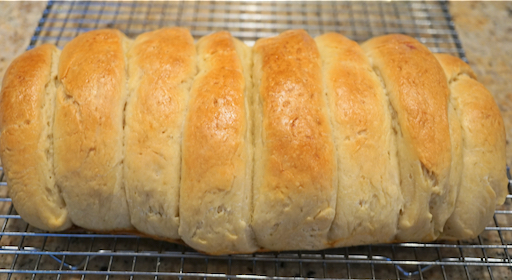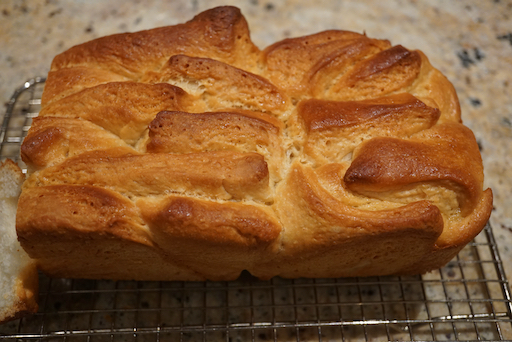This is the third and last of my wife’s Irish soda bread baking binge. This one is quite different from the “traditional” recipe. This came from “Nancy Silverton’s Pastries from the La Brea Bakery”. It is much more complicated than the traditional recipe. (It wouldn’t be La Brea if it wasn’t). It is a muffins/roll and uses eggs, butter, sugar and Caraway seeds. This one is accordingly called “Irish-style”. As a result, it has a very different flavor from the traditional. (Although I used an Easter bunny plate for the picture, my wife pointed out that I covered up the “bunny’s” face with the bread when I took a picture below so only his feet are showing). (Sorry).
Ingredients
3 3/4 cups AP flour
1/2 cup whole wheat flour
1/4 cup sugar
1/2 cup wheat flakes (I didn’t have any so I left it out)
1 1/2 tsp. kosher salt
1 Tbs. baking powder
1 Tsp. baking soda
1 Tbs. lemon zest (or 2 tsp. lemon flavoring)
2 Tbs. caraway seeds
1/2 stick (2 oz.) butter cut into 1/2 inch cubes and frozen
1 3/4 cup buttermilk
Directions:
In a bowl whisk together the dry ingredients from the AP flour to the the caraway seeds so they are well distributed. In the bowl of a food processor with a steel blade add some of the mixed dry ingredients with the butter and pulse until it resembles fine meal. Add the rest of the mixed dry ingredients and continue pulsing. (I found this works better to fully incorporate the butter. If all the mixed dry ingredients are added at once the butter remains in cubes.) Put the dry mixture into a large bowl. Mix the buttermilk and egg. If using lemon flavoring add it to the buttermilk now. Mix the buttermilk egg mixture into the dry mixture. Mix just until everything is incorporated. (I found I had to add more buttermilk for the dough to form otherwise it would have been just crumbs and not held together). Turn out onto a floured surface and gently pat into it together. (The original recipe calls for patting it into a 1/2 inch thick rectangle and then cutting it into various shapes using about 1/2 cup of dough for each shape.) I just took a 1/2 cup measure. filled it with dough and turned it out onto a cookie sheet lined with parchment paper. Bake in a 375 degree oven for 35 to 40 minutes.
This was without a doubt the most complex and refined version of the Irish soda breads my wife made. It had depth of flavor. The caraway seed with the slight hint of lemon was a very good addition. It had the familiar rough crunchy crust and soft moist interior. Traditionalist would say, “but it is not genuine soda bread.” Next time my wife said she would make it even less so by adding raisins.

















